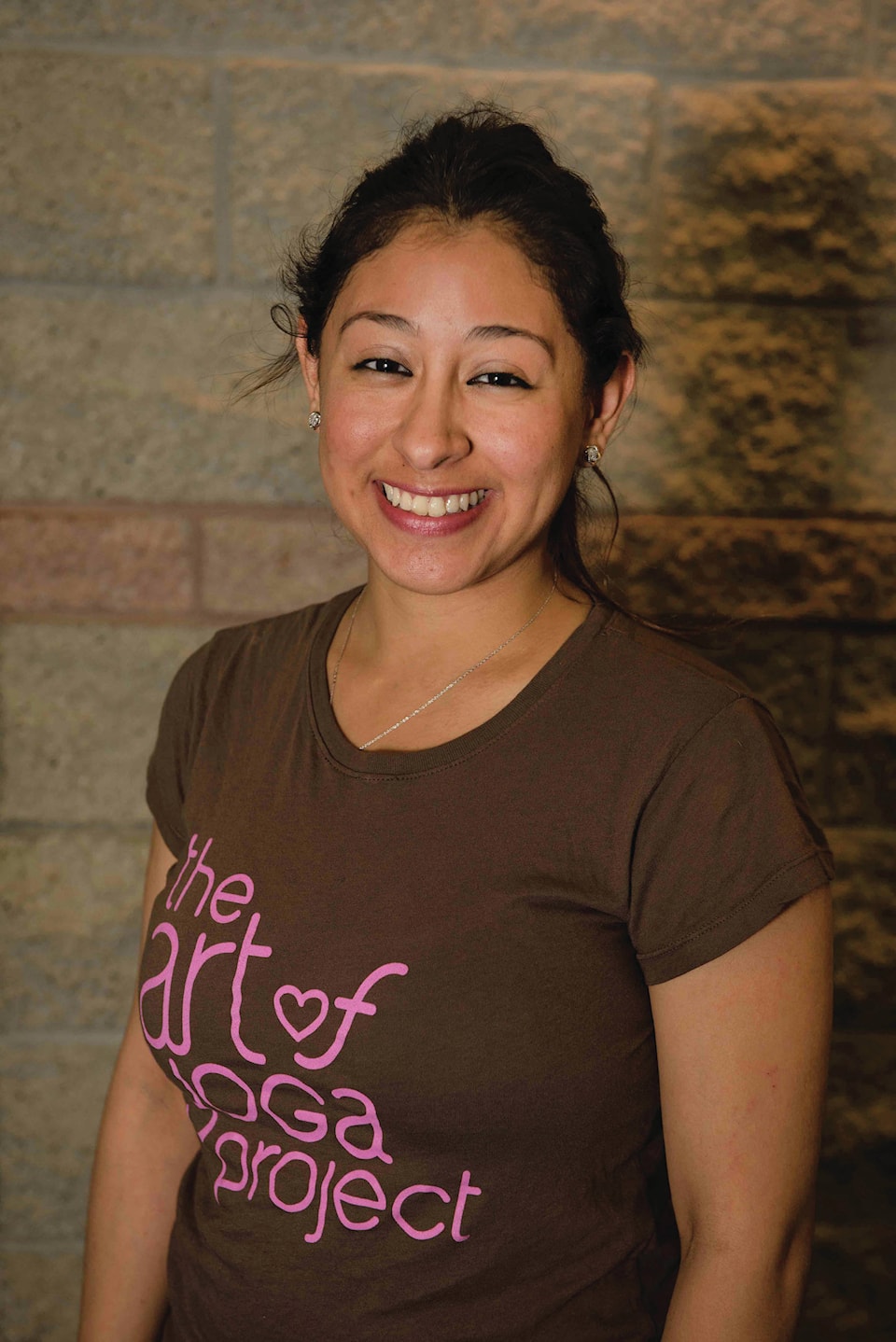As a teenager, Rocsana Enriquez ran away from home frequently to escape fights with her mother and sexual abuse from her stepfather. She got involved with street gangs and cycled in and out of juvenile detention.
While she was incarcerated in Central California, she started to learn yoga. It became an outlet for her anger and an antidote to the deep insecurity she felt. Before she got into a fight, she reminded herself to take a deep breath. And she loved the way she felt when she stretched into “Warrior II” pose. “It made me feel very strong,” she said.
A new report by the Center on Poverty and Inequality at Georgetown Law School shows that yoga programs can be particularly effective at helping girls who are incarcerated cope with the effects of trauma that many have experienced. Research shows yoga and mindfulness can promote healthier relationships, increase concentration, and improve self esteem and physical health.
Such programs, if offered more broadly, would be a cost-effective way to help one of the country’s most vulnerable groups heal and improve their lives, the report says.
“There are promising practices out there, on a relatively small scale, but we know they can help more girls,” said Rebecca Epstein, director of the center and a co-author of the report.
Childhood trauma is prevalent among teens in the juvenile justice system, but girls experience trauma at particularly high rates.
Nearly twice as many incarcerated girls as boys report past physical abuse - 42 percent to 22 percent - according to research cited in the report. And 35 percent of girls report past sexual abuse, compared to 8 percent of boys.
Girls are more likely to be abused by people they have intimate relationships with. Research shows that traumatic experiences have a more profound effect on girls’ mental health. More than three quarters of girls, or 80 percent, show signs of at least one mental health diagnosis, compared to two-thirds of boys.
Emerging brain research, described in the report, illustrates a neurological basis for some of the differences in how girls and boys experience trauma. Estrogen activates a larger field of neurons in female brains, causing girls to experience stress factors in more precise detail. And unlike boys, girls who experience trauma show diminished surface area in the part of the brain that links bodily sensations to emotions.
Yoga can promote healing in a way that talk therapy or another cognitively based therapy cannot, experts say.
“Literally focusing on feeling where your body is and what it’s doing can lead to healing the mind as well,” Epstein said. “You are trying to repair the mind-body connection.”
A growing body of research supports positive physical and psychological effects of yoga. The federal government’s Substance Abuse and Mental Health Services Administration recently recognized a trauma-sensitive yoga curriculum as an evidence-based intervention.
The report references more than 40 published studies that have shown positive benefits of yoga and mindfulness and includes the results of two pilot programs that offered yoga to girls in residential detention programs in Connecticut and Pennsylvania.
Outcomes of those pilot programs included fewer fights in the ward, fewer requests for medications, and fewer medical complaints. Some girls who took part in the program came forward and reported past sexual violence that they had not shared previously, according to the report.
Yoga and mindfulness training are being introduced increasingly in schools as well as detention centers to treat the kinds of traumatic experiences and chronic stress that youth and adults living in poverty experience disproportionately.
The report says that girls in the juvenile justice system nationwide would benefit from a systemic approach with stable funding and from yoga programs that are tailored specifically to their needs as girls and trauma survivors.
With a “trauma-sensitive” approach, instructors would use “invitational language,” asking girls to try different poses or breathing techniques, rather than telling them what to do, so participants can have control over their practice. And teachers would not touch any student without asking first.
Enriquez, who lives in Daly City, Calif., said she realized more fully the benefits of her yoga practice when she was out of juvenile detention and trying to find her way out of an abusive relationship. Her boyfriend, with whom she had two children, was addicted to drugs and physically abused her and sometimes held her captive in their apartment. She ran away - and came back - multiple times.
At her lowest points, she started looking back on some of the things she learned in her yoga classes. She remembered techniques, like breathing and stretching. And she recalled the mantras she learned to tell herself - phrases like “I am enough” and “I am strong.” She found letters she had written to herself and art work she had made in conjunction with the yoga program and they reminded her of the hopes she had for her life.
“They made me think in a different way - that I am somebody,” she said.
Little by little, she said, she distanced herself from her boyfriend and from her feelings of hopelessness. One day she left her boyfriend and did not go back.
“I decided, ‘you deserve better,’” she said. “I put the father of my kids in jail.”
Now, at age 26, Enriquez is a student at San Jose State University majoring in justice, with a goal of becoming a lawyer. She also teaches part-time with the Art of Yoga Project, the organization that she first learned yoga from as a teenager. Now she works with students at two high schools and incarcerated girls in California’s San Mateo County. She also teaches at her children’s school.
“I am very excited for my future and everything I am doing,” she said. “If it wasn’t for yoga, I don’t know if I would be here.”
